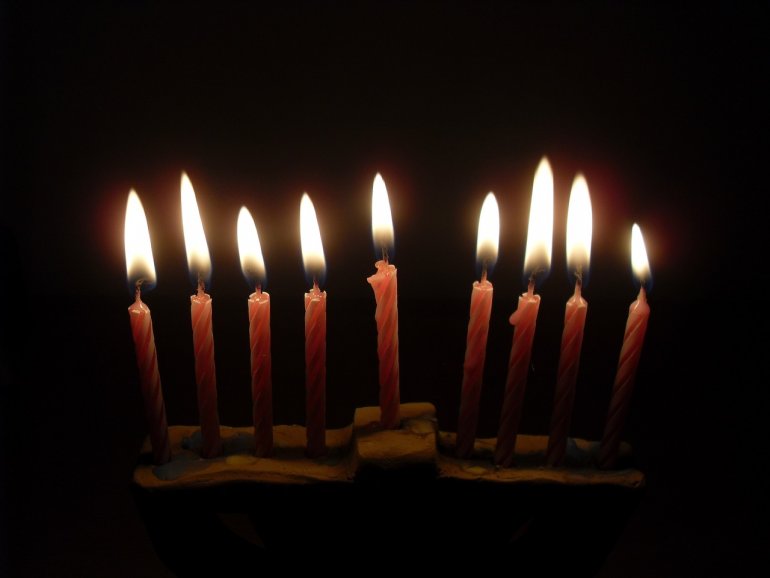Finding hope in Hanukkah lights

The famous scholars Hillel and Shammai disagreed on everything. One of their most famous disagreements was over how to light Hanukkah candles. The disciples of Shammai, Beit Shammai, suggested that we light eight candles the first night of Hanukkah and decrease the number of candles each night. In Shammai’s vision, we would light one candle on the final evening of Hanukkah. Followers of Hillel, Beit Hillel, had the opposite approach. Beit Hillel believed that the number of candles should increase each night, starting with one candle and concluding with eight.
Ultimately, Hillel’s vision emerged as the chosen method for lighting Hanukkah candles. But what does the number of Hanukkah candles we light each night -- or the order we do it in -- actually represent?
The amoraim, rabbinic sages from the third-sixth century, offered a host of theories on the reasoning behind Hillel and Shammai’s opposing candle lighting procedures.According to Rabbi Yossi bar Zevida, Hillel’s suggestion that the number of Hanukkah candles increase every night reflects the idea that holiness should only increase and not decrease.
I connected strongly with Rabbi Yossi’s analysis of Hillel’s Hanukkah lighting logic, because of its application to Jewish education. Just like the Hanukkah candles, Jewish education increases the holiness in our world. Every incremental act of Jewish engagement -- the study of sacred Jewish texts, Hebrew language classes, immersive Israel experiences, and Jewish youth group experiences -- adds a new level of holiness to the lives of participants. Through these activities, students make intellectual discoveries, forge friendships and learn how to thrive as Jews. Many of these Jewish experiences become sacred memories and formative experiences in students’ Jewish lives.
Rabbi Yossi’s understanding of Hillel is especially resonant in a post-Pittsburgh world. Every day there seems to be a fresh news item about an attempt to desecrate holy Jewish communal spaces, or any place where Jewish children and families might be going about day-today life. This year, Hanukkah comes at a time when the global Jewish community desperately needs an opportunity to celebrate the sanctity of Jewish tradition. Each night of Hanukkah brings a new candle and a fresh opportunity to celebrate an elevated sense of holiness.
Jewish tradition encourages the lifelong pursuit of Jewish study for the same reason Rabbi Yossi believed Hillel advocated for increasing the number of Hanukkah candles each night. The more Jewish education a student pursues, the more they discover the inherent holiness of living a Jewish life.
Gabriel Weinstein is Project Manager, Digital Content and Communications, for The Jewish Education Project.
